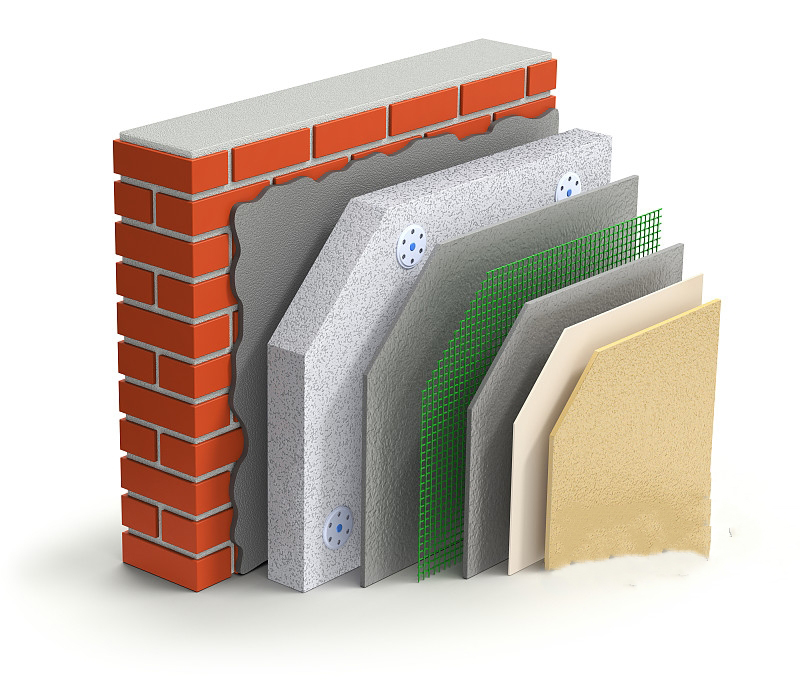AnxinCel® Cellulose ether HPMC/MHEC products can be widely used in bonding mortar and embedded mortar. It can make the mortar have proper consistency, do not sag during use, do not stick to the trowel, feel light during use, smooth construction, easy to be interrupted, and the finished pattern remains unchanged.
Cellulose ether for Exterior Insulation Finishing System (EIFS)
External Thermal Insulation Finishing System (EIFS), also known as EWI (Exterior Insulation System) or External Thermal Insulation Composite System (ETICS), is a kind of exterior wall cladding that uses rigid insulation boards on the outer skin of the exterior wall.
The external wall insulation system is composed of polymer mortar, flame-retardant molded polystyrene foam board, extruded board and other materials, and then the bonding construction is carried out on site.
The External Thermal Insulation Finishing System integrates the functions of thermal insulation, waterproofing and decorative surfaces with integrated materials, which can meet the energy-saving needs of modern housing construction, and can also improve the external wall thermal insulation level of industrial and civil buildings. It is an insulation layer built directly and vertically on the surface of the external wall. Generally speaking, the base layer will be constructed of bricks or concrete, which can be used for the renovation of external walls or for new walls.

Advantages of External Thermal Insulation Finishing System
1. Wide range of application
External wall insulation can be used not only in heating buildings in the northern areas requiring thermal insulation, but also in air-conditioned buildings in southern areas requiring thermal insulation, and it is also suitable for new buildings. It has a very wide range of applications.
2. Obvious heat preservation effect
Insulation materials are generally placed on the outside of the outer wall of the building, so it can almost eliminate the influence of thermal bridges in all parts of the building. It can give full play to its light-weight and high-efficiency thermal insulation material. Compared with external wall internal thermal insulation and sandwich thermal insulation wall, it can use thinner thermal insulation materials to achieve the best energy-saving effect.
3. Protect the main structure
External wall insulation can better protect the main structure of the building. Because it is an insulation layer placed on the outside of the building, it greatly reduces the influence of temperature, humidity and ultraviolet rays from the natural world on the main structure.
4. Conducive to improving the indoor environment
External wall insulation is also conducive to improving the indoor environment, it can effectively improve the thermal insulation performance of the wall, and can also increase the indoor thermal stability.
| Recommend Grade: | Request TDS |
| HPMC AK100M | Click here |
| HPMC AK150M | Click here |
| HPMC AK200M | Click here |